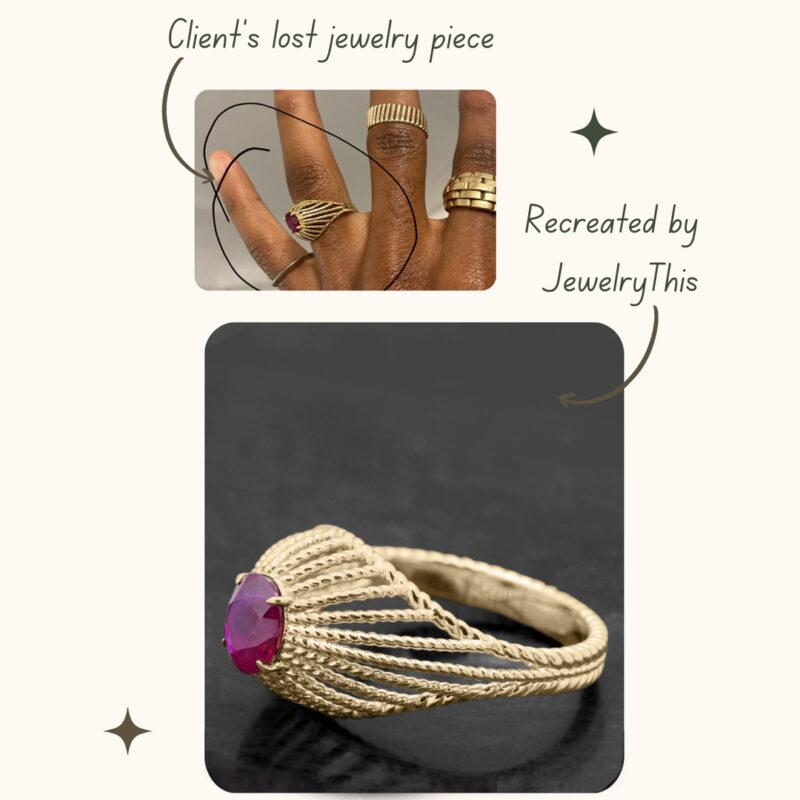Losing a cherished piece of jewelry can be a distressing experience, not only for its sentimental value but also for its financial worth. Fortunately, many homeowners’ insurance policies offer coverage for such losses, providing a potential safety net. However, navigating the process of filing a claim can often be as complex as the emotions tied to the lost item. This guide will walk you through the essential steps of filing a claim for lost jewelry under your home insurance policy, ensuring that you approach the situation with confidence and clarity. By understanding the intricacies of your policy, gathering the necessary documentation, and following a systematic approach, you can maximize your chances of a successful claim, allowing you to focus on moving forward.
Understanding Your Home Insurance Policy Coverage for Jewelry
When it comes to safeguarding your precious jewelry, understanding the specifics of your home insurance policy is crucial. Homeowners insurance policies often cover personal property, including jewelry, but there are typically limits on the coverage amount. Here’s what you should look for in your policy:
- Coverage Limits: Most standard policies have a cap on jewelry coverage, often around $1,000 to $2,000. Consider an additional rider or floater if your collection exceeds these limits.
- Perils Covered: Check if your policy covers common risks like theft, loss, or damage. Some policies may require specific endorsements for certain types of loss.
- Appraisal Requirements: Insurers may require a professional appraisal to validate the value of your jewelry, ensuring accurate compensation in case of a claim.
- Documentation: Maintain updated records and receipts of your jewelry items to streamline the claims process.
By thoroughly reviewing these aspects, you can ensure that your valuable items are adequately protected and that you are prepared to file a claim efficiently should the need arise.

Documenting the Loss: Essential Steps for a Successful Claim
When dealing with the unfortunate event of lost jewelry, thorough documentation is crucial for a successful insurance claim. Start by gathering any original receipts or appraisal documents for the missing items. These documents serve as proof of ownership and help establish the item’s value. If these papers are unavailable, consider providing photographs of the jewelry, ideally ones where the piece is being worn, as they can substantiate your claim.
Next, create a detailed account of the incident. Note down the date, time, and location where you last saw the jewelry, and include any relevant circumstances surrounding the loss. Be sure to mention any security measures you had in place, such as a safe or an alarm system, as this can reinforce your claim. Compile a list of witnesses who can verify your account, if applicable. contact your insurer promptly to report the loss, providing them with all the gathered documentation. Remember, the more detailed and organized your documentation, the smoother the claims process will be.
Navigating the Claims Process: Tips for Effective Communication with Your Insurer
When dealing with the aftermath of losing a cherished piece of jewelry, it’s crucial to communicate effectively with your insurer to ensure a smooth claims process. Start by gathering all necessary documentation, including purchase receipts, appraisals, and photographs of the lost item. This will help substantiate your claim and provide the insurer with the evidence they need to process it efficiently.
Clear and concise communication is key. When contacting your insurer, be prepared to provide a detailed description of the lost item, the circumstances under which it was lost, and any efforts made to recover it. Consider using the following tips to streamline the conversation:
- Stay Organized: Keep all correspondence, including emails and notes from phone calls, in one place.
- Be Proactive: Follow up regularly on the status of your claim and ask for a timeline for when you can expect a resolution.
- Clarify Details: Don’t hesitate to ask for clarification on any terms or conditions you don’t understand.
Approaching the process with a structured plan will not only help in speeding up your claim but also in reducing the stress that often accompanies such situations.

Maximizing Your Claim: Recommendations for Providing Proof and Valuation
When it comes to substantiating your claim for lost jewelry, presenting compelling proof and a solid valuation is paramount. Begin by gathering all documentation related to your jewelry. This may include purchase receipts, appraisals, certificates of authenticity, and even photographs showing you wearing the jewelry. Having a comprehensive paper trail not only strengthens your claim but also expedites the process. If the jewelry was a gift, a letter or affidavit from the giver detailing the item’s description and value can also be beneficial.
- Receipts and invoices: These are crucial for establishing the original purchase price and the authenticity of the jewelry.
- Appraisals: Ensure that these are recent, as insurance companies often require valuations that reflect the current market value.
- Photographs: Capture clear images of the jewelry from multiple angles, including any distinguishing features or hallmarks.
- Police report: If applicable, provide a copy of any police report filed regarding the loss or theft of the jewelry.
For valuation, consider obtaining a professional appraisal if your documentation is outdated or incomplete. An updated appraisal not only provides a current market value but also offers an independent assessment that can be pivotal in negotiations with your insurer. Additionally, if your jewelry is part of a collection, providing context for its rarity or uniqueness can further bolster your claim. Remember, the more detailed and precise your documentation, the more likely you are to receive a favorable settlement.

